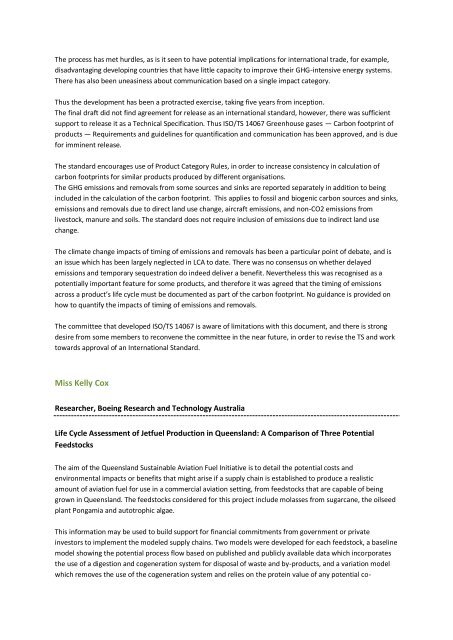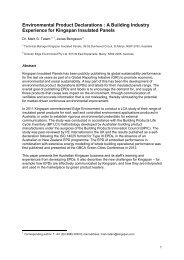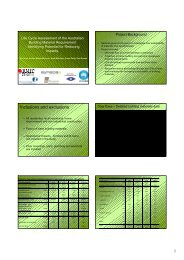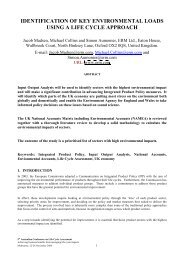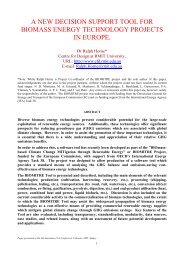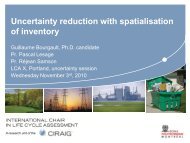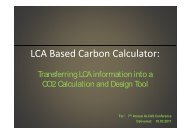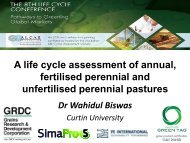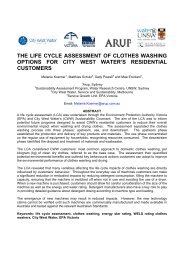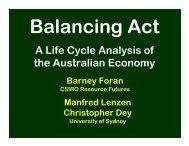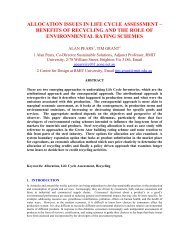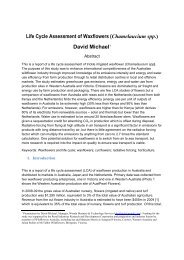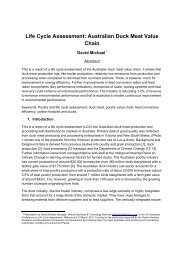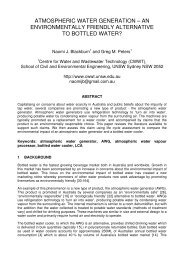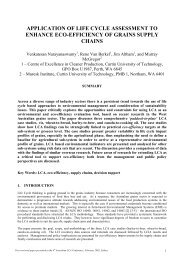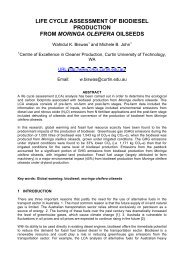Abstracts - ALCAS Conference - Australian Life Cycle Assessment ...
Abstracts - ALCAS Conference - Australian Life Cycle Assessment ...
Abstracts - ALCAS Conference - Australian Life Cycle Assessment ...
Create successful ePaper yourself
Turn your PDF publications into a flip-book with our unique Google optimized e-Paper software.
The process has met hurdles, as is it seen to have potential implications for international trade, for example,<br />
disadvantaging developing countries that have little capacity to improve their GHG-intensive energy systems.<br />
There has also been uneasiness about communication based on a single impact category.<br />
Thus the development has been a protracted exercise, taking five years from inception.<br />
The final draft did not find agreement for release as an international standard, however, there was sufficient<br />
support to release it as a Technical Specification. Thus ISO/TS 14067 Greenhouse gases — Carbon footprint of<br />
products — Requirements and guidelines for quantification and communication has been approved, and is due<br />
for imminent release.<br />
The standard encourages use of Product Category Rules, in order to increase consistency in calculation of<br />
carbon footprints for similar products produced by different organisations.<br />
The GHG emissions and removals from some sources and sinks are reported separately in addition to being<br />
included in the calculation of the carbon footprint. This applies to fossil and biogenic carbon sources and sinks,<br />
emissions and removals due to direct land use change, aircraft emissions, and non-CO2 emissions from<br />
livestock, manure and soils. The standard does not require inclusion of emissions due to indirect land use<br />
change.<br />
The climate change impacts of timing of emissions and removals has been a particular point of debate, and is<br />
an issue which has been largely neglected in LCA to date. There was no consensus on whether delayed<br />
emissions and temporary sequestration do indeed deliver a benefit. Nevertheless this was recognised as a<br />
potentially important feature for some products, and therefore it was agreed that the timing of emissions<br />
across a product’s life cycle must be documented as part of the carbon footprint. No guidance is provided on<br />
how to quantify the impacts of timing of emissions and removals.<br />
The committee that developed ISO/TS 14067 is aware of limitations with this document, and there is strong<br />
desire from some members to reconvene the committee in the near future, in order to revise the TS and work<br />
towards approval of an International Standard.<br />
Miss Kelly Cox<br />
Researcher, Boeing Research and Technology Australia<br />
<strong>Life</strong> <strong>Cycle</strong> <strong>Assessment</strong> of Jetfuel Production in Queensland: A Comparison of Three Potential<br />
Feedstocks<br />
The aim of the Queensland Sustainable Aviation Fuel Initiative is to detail the potential costs and<br />
environmental impacts or benefits that might arise if a supply chain is established to produce a realistic<br />
amount of aviation fuel for use in a commercial aviation setting, from feedstocks that are capable of being<br />
grown in Queensland. The feedstocks considered for this project include molasses from sugarcane, the oilseed<br />
plant Pongamia and autotrophic algae.<br />
This information may be used to build support for financial commitments from government or private<br />
investors to implement the modeled supply chains. Two models were developed for each feedstock, a baseline<br />
model showing the potential process flow based on published and publicly available data which incorporates<br />
the use of a digestion and cogeneration system for disposal of waste and by-products, and a variation model<br />
which removes the use of the cogeneration system and relies on the protein value of any potential co-


